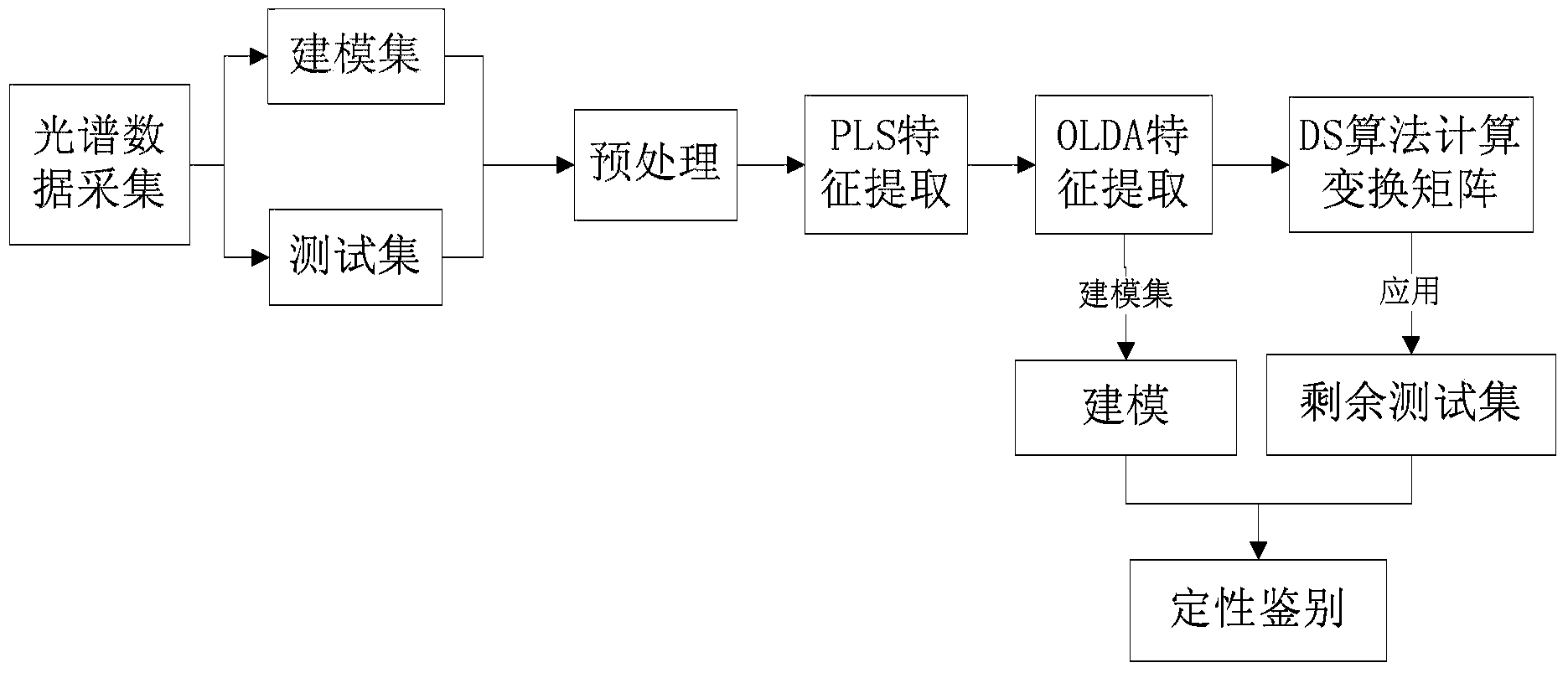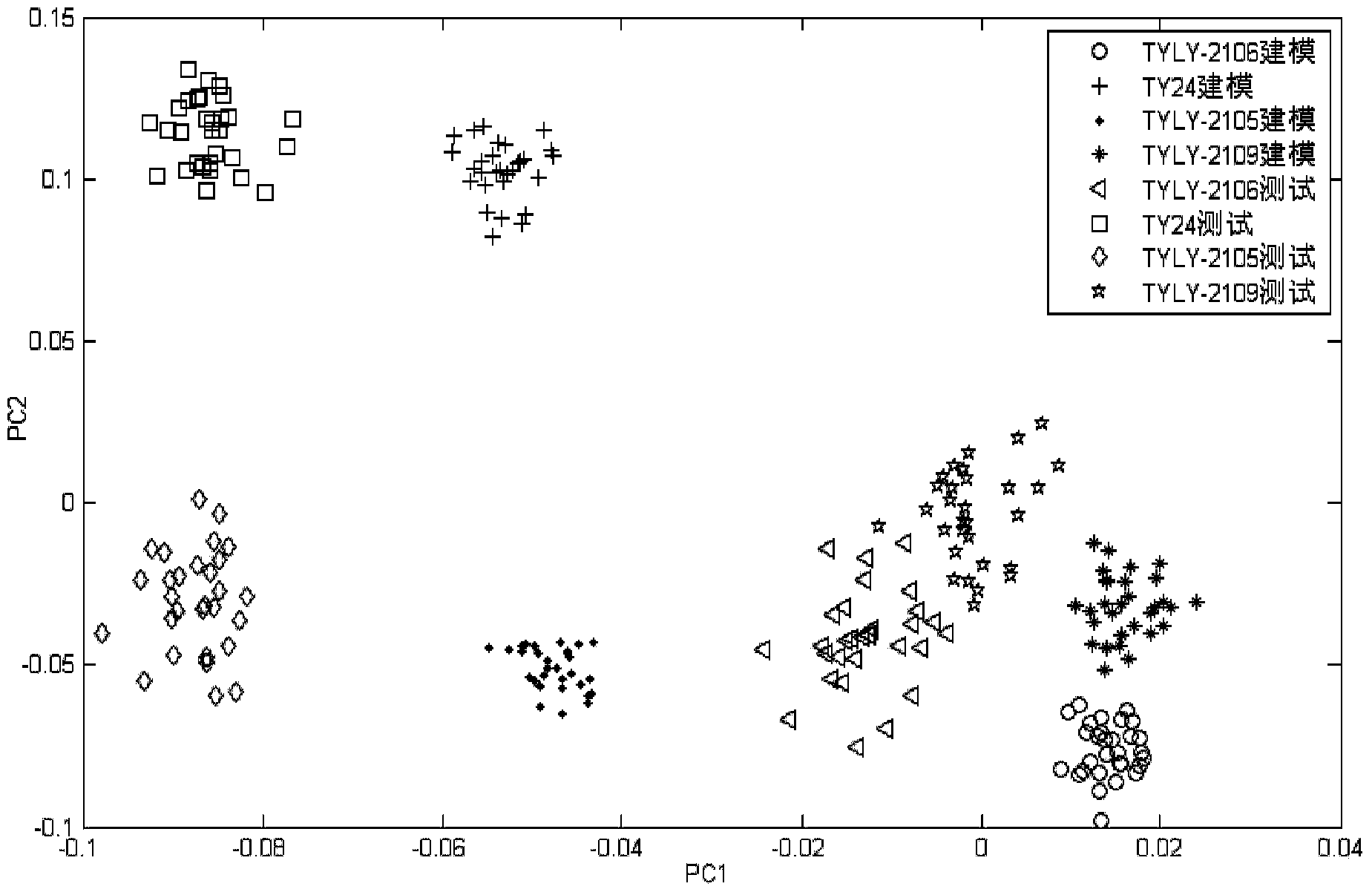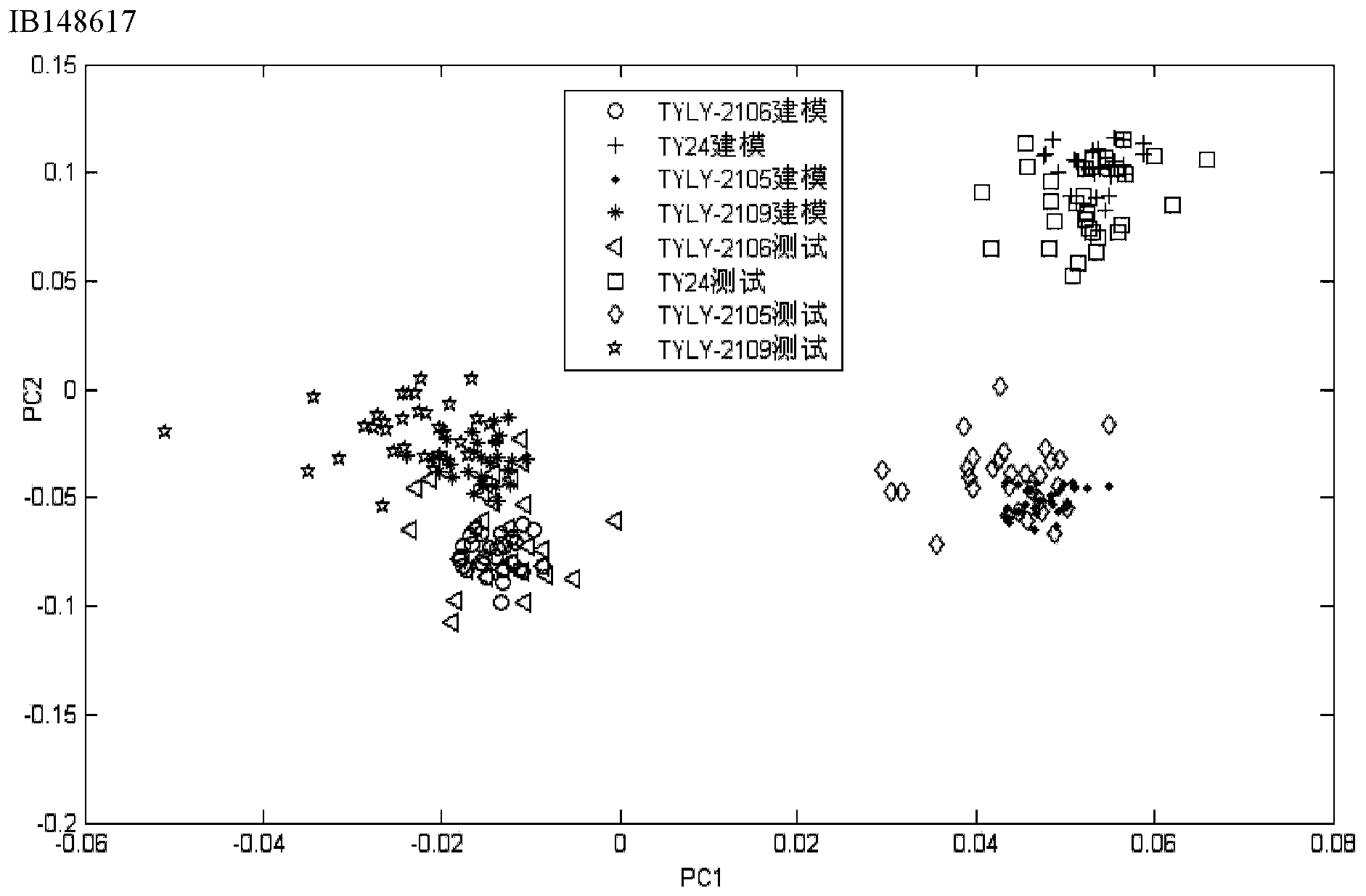Qualitative analysis method for improving identification result on basis of near-infrared mode
A qualitative analysis and linear discriminant analysis technology, applied in the field of qualitative analysis based on near-infrared to improve discriminant results, can solve problems such as loss of useful information, algorithm failure, and large linear discriminant analysis.
Active Publication Date: 2015-02-25
INST OF SEMICONDUCTORS - CHINESE ACAD OF SCI
View PDF3 Cites 28 Cited by
- Summary
- Abstract
- Description
- Claims
- Application Information
AI Technical Summary
Problems solved by technology
[0006] In the practical application of near-infrared spectroscopy for qualitative analysis, many methods use linear discriminant analysis (LDA) in feature extraction. Since the data dimension extracted by the LDA method must be 1 smaller than the number of categories, if the LDA algorithm is used in qualitative analysis , when the number of categories is small, the dimensionality of data extracted by LDA is limited, which may lead to the loss of useful information, or even the complete failure of the algorithm
Method used
the structure of the environmentally friendly knitted fabric provided by the present invention; figure 2 Flow chart of the yarn wrapping machine for environmentally friendly knitted fabrics and storage devices; image 3 Is the parameter map of the yarn covering machine
View moreImage
Smart Image Click on the blue labels to locate them in the text.
Smart ImageViewing Examples
Examples
Experimental program
Comparison scheme
Effect test
Embodiment
[0134] In this embodiment, the present invention will be further described in detail by taking the identification of varieties of corn seeds as an example.
the structure of the environmentally friendly knitted fabric provided by the present invention; figure 2 Flow chart of the yarn wrapping machine for environmentally friendly knitted fabrics and storage devices; image 3 Is the parameter map of the yarn covering machine
Login to View More PUM
 Login to View More
Login to View More Abstract
The invention discloses a qualitative analysis method for improving an identification result on the basis of the near-infrared mode. The qualitative analysis method comprises the steps of (1) acquiring near-infrared spectral data of a sample and determining a modeling set and testing sets; (2) carrying out pretreatment, partial-least-square feature extraction and orthogonal-linear-identification feature extraction on the modeling set and the testing sets in sequence; (3) calculating a spectral transformation matrix between the modeling set and the testing sets by adopting a direct model transferring method, and correcting the remaining testing sets; (4) establishing a quantitative analysis model; and (5) carrying out quantitative identification on the remaining testing sets by utilizing the established quantitative analysis model. The qualitative analysis method disclosed by the invention is established on the basis of near-infrared quantitative analysis, and the orthogonal-linear-identification method which is used in multi-classification and two-classification problems is used in the feature extraction step; in addition, the testing sets can be corrected by the direct model transferring method, so that the model applicability caused by long-time spectral shift of the same instrument can be realized and the result of quantitative identification is improved.
Description
technical field [0001] The invention relates to the field of near-infrared qualitative identification, in particular to a qualitative analysis method based on near-infrared to improve identification results. Background technique [0002] Near Infrared Spectrum (NIR) is an electromagnetic radiation wave between visible light (Vis) and mid-infrared (MIR). The first non-visible region discovered in the absorption spectrum. The near-infrared spectrum region is consistent with the combined frequency of the vibration of hydrogen-containing groups (O-H, N-H, C-H) in organic molecules and the absorption region of all levels of frequency multiplication. By scanning the near-infrared spectrum of the sample, the hydrogen-containing groups of organic molecules in the sample can be obtained. The characteristic information of the cluster, and the use of near-infrared spectroscopy to analyze samples has the advantages of convenience, rapidity, efficiency, accuracy and low cost, without de...
Claims
the structure of the environmentally friendly knitted fabric provided by the present invention; figure 2 Flow chart of the yarn wrapping machine for environmentally friendly knitted fabrics and storage devices; image 3 Is the parameter map of the yarn covering machine
Login to View More Application Information
Patent Timeline
 Login to View More
Login to View More Patent Type & Authority Applications(China)
IPC IPC(8): G01N21/359
Inventor 张丽萍李卫军董肖莉覃鸿
Owner INST OF SEMICONDUCTORS - CHINESE ACAD OF SCI
Features
- R&D
- Intellectual Property
- Life Sciences
- Materials
- Tech Scout
Why Patsnap Eureka
- Unparalleled Data Quality
- Higher Quality Content
- 60% Fewer Hallucinations
Social media
Patsnap Eureka Blog
Learn More Browse by: Latest US Patents, China's latest patents, Technical Efficacy Thesaurus, Application Domain, Technology Topic, Popular Technical Reports.
© 2025 PatSnap. All rights reserved.Legal|Privacy policy|Modern Slavery Act Transparency Statement|Sitemap|About US| Contact US: help@patsnap.com



